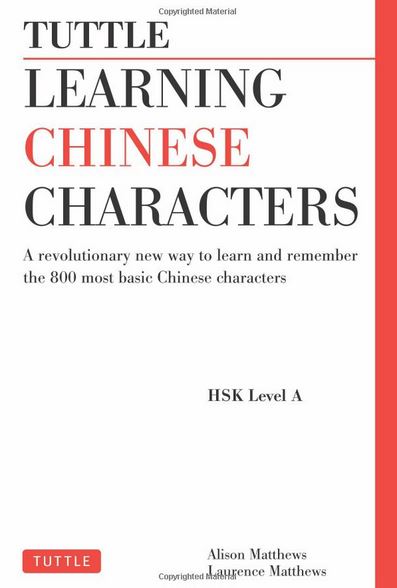According to the CIA’s World Factbook, Mandarin has more native speakers than any other language in the world. With 12.44% of the world population being native Mandarin speakers and Spanish (4.85%) being the second highest, you can see why learning Mandarin might just be beneficial. But if you’re anything like me, the sheer idea of having to learn 3-4000 Chinese characters in order to be literate is beyond daunting.
"Because learning to read Mandarin is much about memorization, this book gives the background information behind each character. This is supposed to help the reader have better luck at remembering each character."
Tuttle’s Learning Chinese Characters helps you jump start your Chinese literacy by helping you learn your first 800 characters. I know, I know – even 800 sounds like an awful lot, but if you’re going to learn how to read Mandarin, then you do what you’ve got to do. The book focuses on simplified characters rather than traditional characters, though they do show one small image of the traditional form.
Because learning to read Mandarin is much about memorization, this book gives the background information behind each character. This is supposed to help the reader have better luck at remembering each character. However, this background information is really only helpful whenlearning the radicals, the base forms of Chinese characters. The problem is, when you have to combine radicals – as you do most of the time – the “helpful” memorization tips become not that helpful.
It’s important to note that this book simply focuses on learning how to read; speaking Mandarin and learning the basic rules of grammar are not the objective of this book whatsoever. That doesn’t mean the book is useless by any stretch of imagination. To really learn Mandarin, you will have to learn how to write and this will require a lot more time and dedication than learning to write in a non-tonal language.

If you are a Mandarin teacher, you may find this book useful for your students. I wouldn’t recommend basing your class lesson around Tuttle’s Learning Chinese Characters, but it can still be incorporated in your class. It may be a good book for you to use to assign homework that can be reviewed at the beginning of the class. You can design class work and grammar lessons using the characters your student did for homework from Tuttle’s Learning Chinese Characters. The book has no practical examples of the characters, so as a teacher you will have to supplement your students learning a lot.
As a teacher, you will also probably have to help your student drawing the characters. This book has no practice sections and the instructions for how to draw the characters is not that great. When you are checking your student’s homework at the beginning of each class, you may want to spend 5-10 minutes just teaching on the art of writing.
All in all, Tuttle’s Learning Chinese Characters can be useful, but will by no means help your students to speak or comprehend Chinese. As a teacher, this book is useful as a resource rather than a guide.




